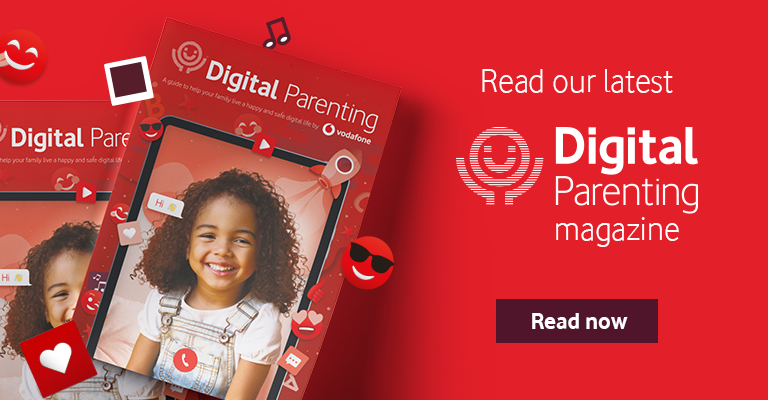
If you need help managing what your kids see (and don't see) online, then you need the following tips, tricks and advice for setting up parental controls and privacy settings on your devices and mobile networks.
Parental controls help you manage and restrict what your kids can see and do online – from websites they can view to the apps they can download and purchases they can make. Controls can be especially useful for keeping younger children safe (and from preventing them innocently spending money on games and more) while also teaching them the skills they need to navigate the online world themselves once they’re given the freedom to do so.
With the support of built-in filters offered by mobile and broadband providers, you have many options for reducing the probability of your kids coming across malicious, inappropriate or upsetting content. Some parental controls can also be applied across multiple devices and accounts.
Smartphones and tablets
The UK’s main mobile providers (Vodafone, EE, 02 and Three) automatically block 18+ rated content through a network-level filtering system called Active Choices. Be aware though that once a smartphone is connected to Wi-Fi (at home or elsewhere) then Active Choices filters won’t apply. Some broadband providers, such as Vodafone, provide separate content filters that can be enabled if you wish.
You may therefore wish to use the parental control options built into your child’s phone as an extra precuation. The options available to you will vary, depending on which operating system it runs.
Android (Google, Samsung, LG, Sony, Huawei, HTC, Nokia, Motorola)
You can limit which apps, games and content can be downloaded from the Google Play Store. You can also manage your child’s screen time and decide what apps they can use and websites they can visit using Google’s free Family Link app.
iOS (iPhone)
You can enable or disable features such as FaceTime and in-app purchases as well as the built-in apps such as the Safari web browser.
Home computers
The available parental control options built into your home computer will vary depending on whether you have a Mac or Windows PC.
Windows 10
You can get reports on your child’s online activity and manage their screen time on their Windows 10 and Xbox One devices using Microsoft’s Family Safety feature. Additionally, you can restrict them for visiting certain websites and monitor their spending habits on the Microsoft Store. Family Safety’s controls even extend to your child’s Android device if it has the Microsoft Launcher app installed.
MacOS
The Screen Time feature in macOS allows you to set limits on your child’s screen time and control what they can download and buy from the Mac App Store and iTunes Store. You also have the option to restrict which apps they can use.
Search engines
Google has a filtering system called SafeSearch to prevent obviously inappropriate content from appearing in its search results. YouTube can also be restricted in a similar way. You can ensure SafeSearch is enforced whenever your child is searching while signed in with their Google account on a home computer, and on their Android device, by using the Google Family Link app already mentioned.
Other search engines, such as DuckDuckGo, Bing and Yahoo, have their own versions of SafeSearch which can be enabled in their settings.
Games
Gaming is a big part of children’s lives today, not only as a form of entertainment, but also as a social and interactive activity, which is why it’s important their devices and accounts are suitably restricted to age-appropriate limits.
PlayStation, Xbox and Nintendo Switch consoles all offer their own parental control options, including time and spending limits, as well as managing access to games and online purchases.
There are three general areas to consider with your child to encourage safer gaming:
- Consoles and their associated online stores give you the option to limit what games your child can play, based on the PEGI age rating system. This can help ensure they play games suited to their maturity level. Steam – the most popular online game store for home computers – has its own Family View controls so you can decide which purchased games are available to your child.
- If you don’t want your child chatting in-game with people outside of their friends list, you can disable chat functions or restrict gaming to friend circles.
- Many online multiplayer games let players block, report or mute anyone they don’t want contact with. If they don’t already, show your child how to do this in each of the games they play.
For more information about Digital Parenting, visit Vodafone UK’s dedicated website.



![Portrait of school age boy sitting at kitchen table do not want to eat[Adobe Stock] stock photo of a young boy sitting at a kitchen table, refusing to eat the food in front of him](https://www.vodafone.co.uk/newscentre/app/uploads/2024/03/Portrait-of-school-age-boy-sitting-at-kitchen-table-do-not-want-to-eatAdobe-Stock.jpg)


![mother with daughter with smartphone in snowy weather [Adobe Stock] stock photo of a mother outside in snowy weather with her daughter while using a smartphone](https://www.vodafone.co.uk/newscentre/app/uploads/2024/02/mother-with-daughter-with-smartphone-in-snowy-weather-Adobe-Stock.jpg)



